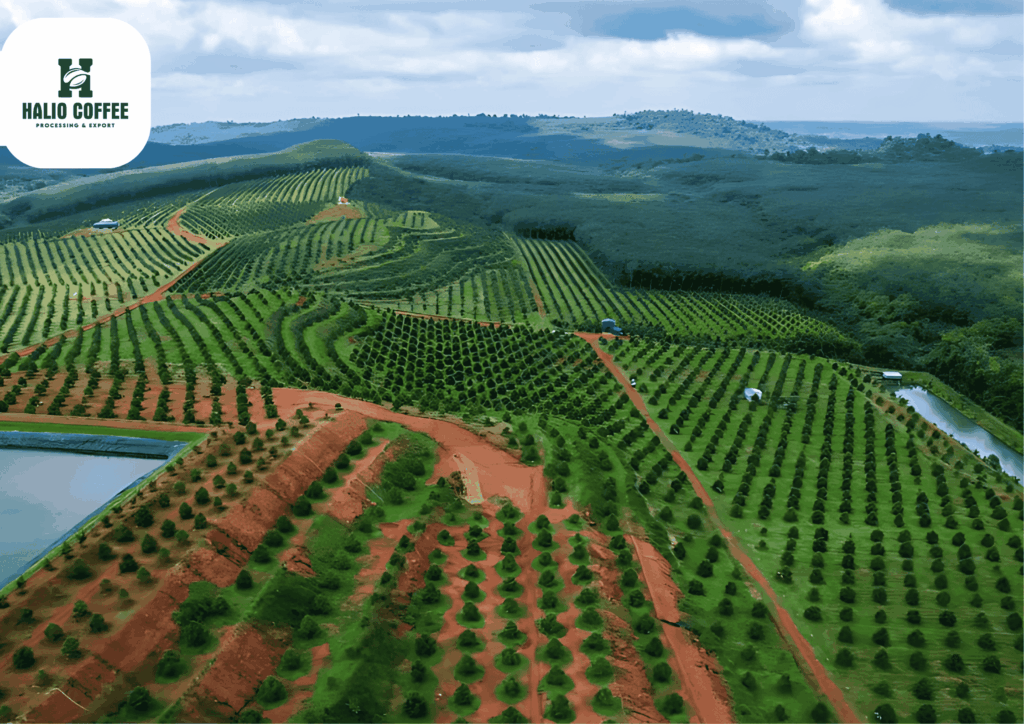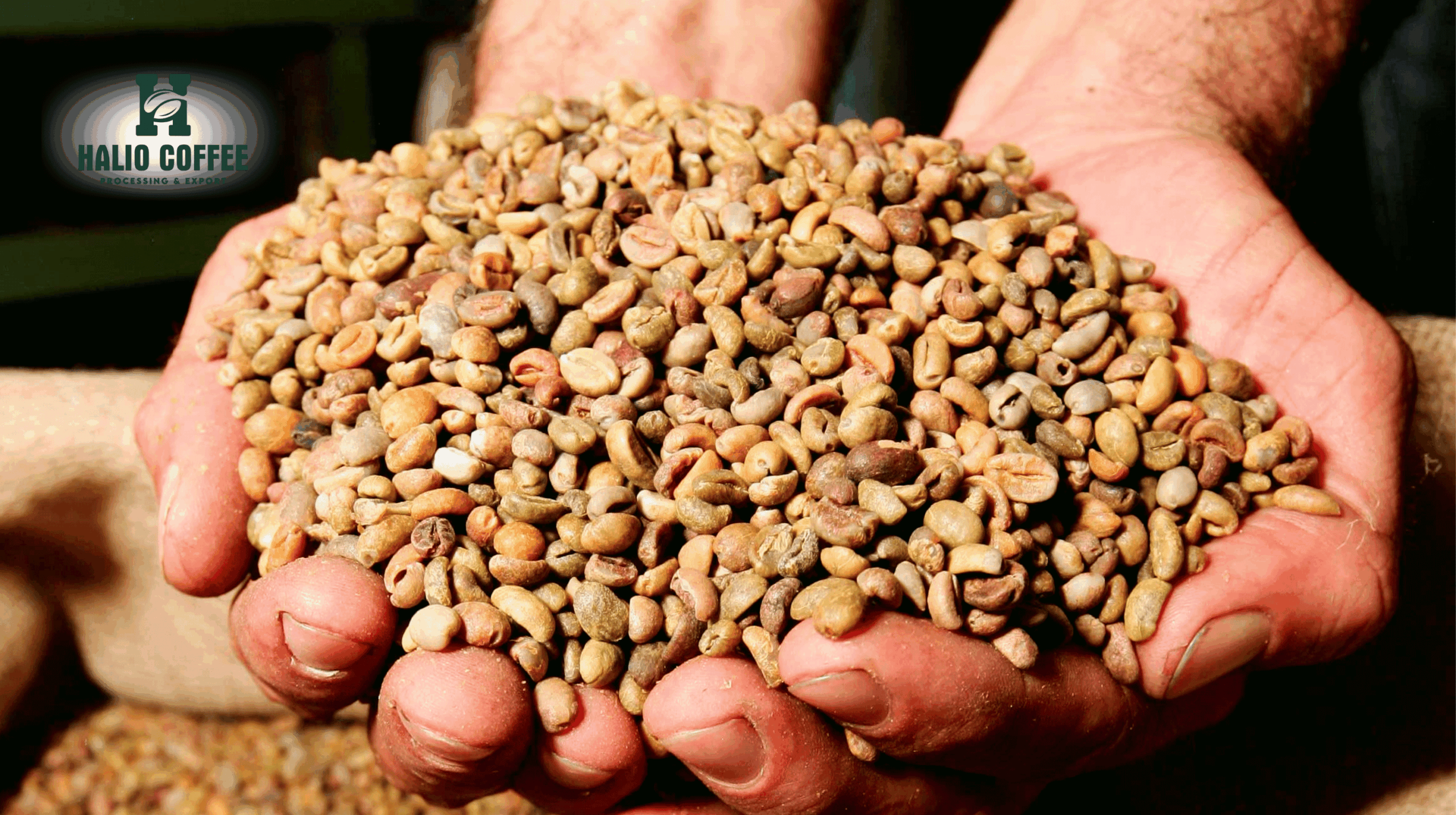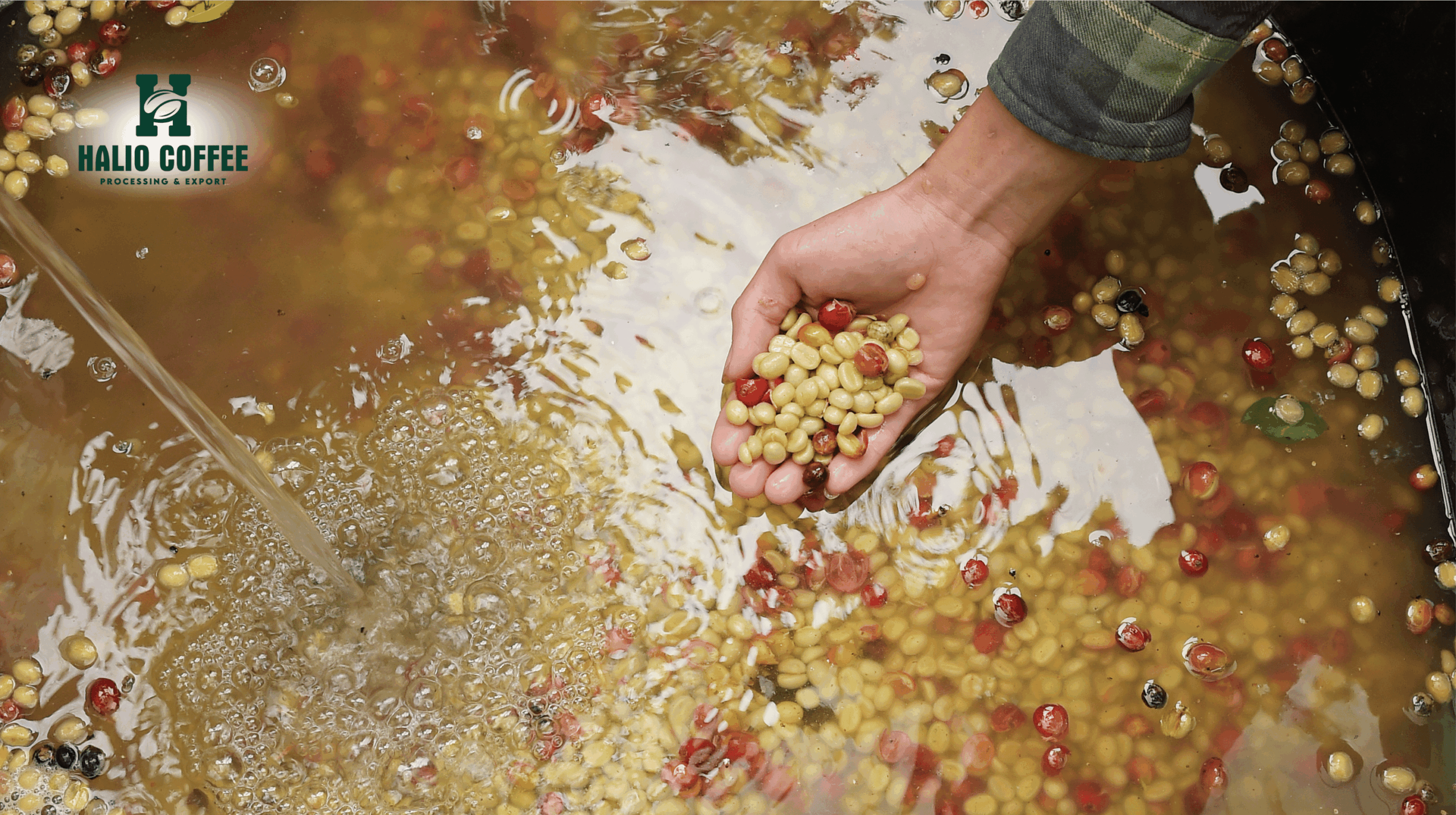Gia Lai Robusta Green Coffee: Vietnam’s High-Potential Coffee Origin for Global Buyers
Vietnam is the world’s second-largest coffee producer, and Robusta makes up more than 90% of its total output. Within this vast production landscape, the Central Highlands region stands out as the powerhouse of Vietnamese coffee. Among its provinces, Gia Lai has become one of the most sought-after origins for high-quality Robusta thanks to its unique climate, altitude, and soil composition.
For international roasters, distributors, and coffee producers, Gia Lai Robusta green coffee offers both reliable supply and distinctive cup characteristics that differentiate it from standard Robusta beans. Positioned as a bridge between volume-driven production and specialty-grade opportunities, Gia Lai is becoming a focal point for companies seeking to balance price competitiveness, quality, and sustainability.
This article provides an in-depth view of Gia Lai’s coffee industry, comparing it to other producing regions, and exploring why global buyers should pay close attention to this origin.
Gia Lai: A Key Origin in Vietnam’s Coffee Map
The Central Highlands of Vietnam—covering provinces such as Gia Lai, Dak Lak, Lam Dong, and Kon Tum—contribute more than 80% of the country’s total coffee production. While Dak Lak has historically been known as Vietnam’s coffee capital, Gia Lai Robusta green coffee is gaining recognition among exporters and specialty roasters worldwide.
- Geography and altitude: Gia Lai sits at elevations ranging from 600–800 meters above sea level, with certain microclimates reaching even higher. This altitude, combined with rich basaltic soils, creates favorable growing conditions for Robusta beans with improved density and sweetness compared to lowland coffee.
- Climate conditions: The region benefits from distinct wet and dry seasons, ensuring optimal flowering and cherry development. Annual rainfall of 2,200–2,500 mm supports consistent production volumes.
- Farming systems: Most farms are smallholder-operated, averaging 1–3 hectares, though larger plantations also exist. This mix creates diversity in production methods and opens opportunities for both bulk supply and specialty-grade sourcing.
Why Gia Lai Robusta Green Coffee Matters in the Global Market
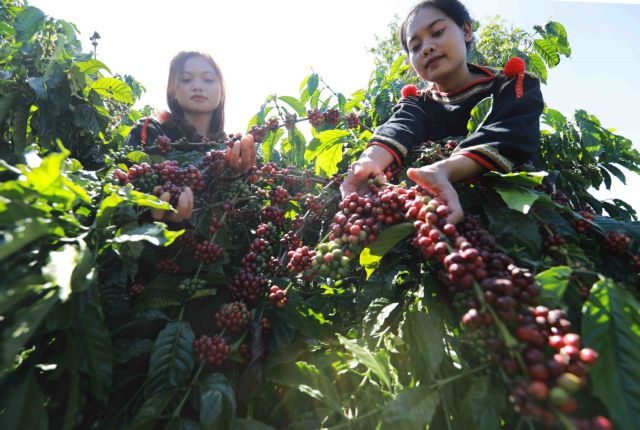
The global coffee industry has witnessed significant changes in demand patterns over the past decade. Arabica still dominates specialty consumption, but Robusta is gaining traction as roasters explore blends with higher body, caffeine content, and unique flavor notes.
Key reasons Gia Lai Robusta green coffee is becoming attractive internationally:
- Flavor profile improvement
Compared to standard Robusta, beans from Gia Lai often exhibit less harsh bitterness, enhanced chocolate and nutty notes, and smoother mouthfeel. When properly processed, they can rival Arabicas in certain espresso blends. - High caffeine content
Gia Lai Robusta typically contains 2.2–2.7% caffeine, making it an excellent choice for high-energy beverages and for markets where caffeine strength is prioritized. - Cost competitiveness
While Arabica prices remain volatile and premium-driven, Gia Lai Robusta provides a stable and affordable alternative, particularly appealing to bulk buyers and large roasters. - Growing specialty interest
The movement toward specialty-grade Robusta has opened new opportunities. With better processing (washed, honey, and natural), Gia Lai beans are increasingly entering cupping tables of specialty buyers worldwide.
Market Dynamics: Linking Gia Lai to Vietnam Green Coffee Beans
For roasters and distributors already familiar with Vietnam green coffee beans, Gia Lai represents a valuable sub-origin worth highlighting in sourcing portfolios. While Vietnam as a whole ensures large-scale supply, Gia Lai brings unique identity and marketing opportunities for businesses that want to differentiate their offerings.
- Export potential: Vietnam exported over 1.2 million tons of coffee in 2024, valued at more than $6 billion. A growing share of this volume comes from Gia Lai-based producers.
- Supply chain infrastructure: Gia Lai benefits from improving logistics, with proximity to Quy Nhon port for exports. Storage and processing facilities are also expanding to meet rising demand.
- Traceability initiatives: Several cooperatives and exporters now offer traceable lots from Gia Lai, enabling roasters to highlight farm-level stories for marketing purposes.
For international companies already sourcing Vietnam green coffee beans, positioning Gia Lai as a sub-origin allows differentiation similar to how Ethiopian Sidamo or Colombian Huila are marketed within their respective countries.
Characteristics of Gia Lai Robusta Green Coffee
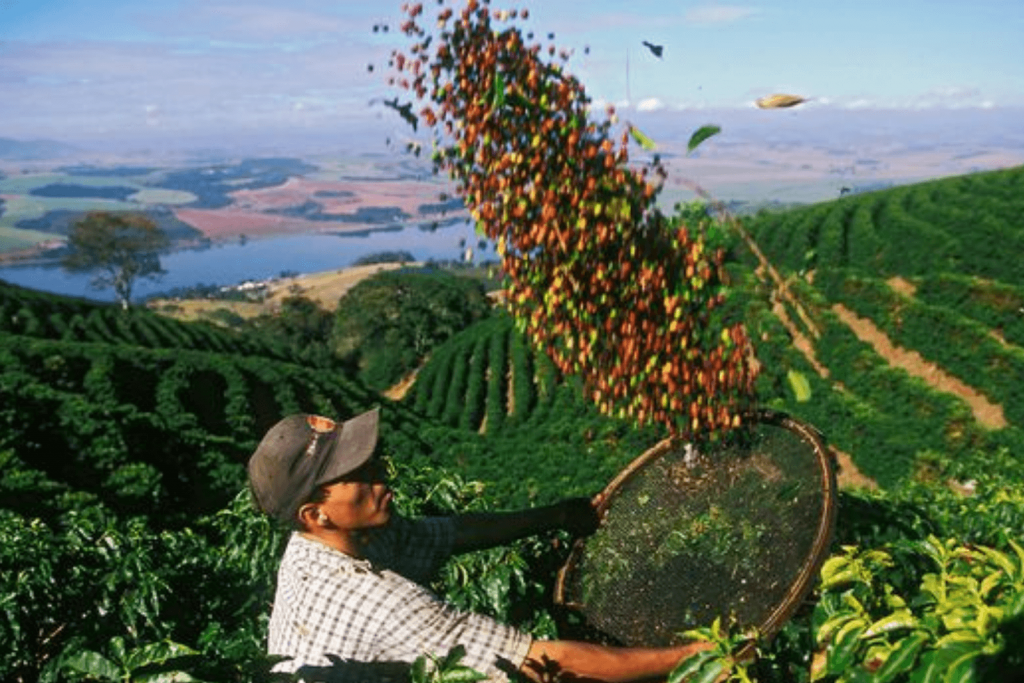
Bean Quality and Processing Methods
Traditional sun-dried methods remain dominant in Gia Lai, but modern processing is expanding quickly.
- Natural process: Produces bold, earthy, and chocolate-heavy flavor profiles, popular among espresso-focused markets.
- Washed process: Offers cleaner cups, reducing bitterness and highlighting nutty sweetness.
- Honey process: A newer trend in Gia Lai, producing beans with balanced acidity, body, and caramel-like sweetness.
These processing advancements align with the needs of roasters searching for Vietnamese Robusta Green Coffee beans with consistent and elevated profiles.
Flavor Profile Summary
- Bitterness: Medium to strong, but smoother compared to lowland Robusta
- Acidity: Low to medium
- Body: Heavy, syrupy mouthfeel
- Aroma: Nutty, woody, chocolatey, sometimes with dried fruit notes
Bulk Supply for Roasters and Distributors
For companies requiring volume, Gia Lai Robusta green coffee offers bulk supply opportunities that balance price efficiency with consistent quality. Exporters provide both conventional and specialty-grade options, tailored to the needs of:
- Large-scale instant coffee manufacturers seeking stable Robusta input
- Espresso roasters blending Arabica with Robusta to enhance crema and body
- Retail coffee brands marketing single-origin Robusta as part of product diversification strategies
Sustainability and Challenges in Gia Lai’s Coffee Sector
Environmental Pressures
Like other coffee-producing regions, Gia Lai faces challenges related to climate change, deforestation, and water usage. Rising temperatures and irregular rainfall threaten long-term productivity.
Farmer Livelihoods
Most coffee in Gia Lai is produced by smallholder farmers. Ensuring stable income through better pricing, training, and cooperative development is critical. Programs by NGOs and export companies aim to improve farmer resilience and promote sustainable Vietnamese Robusta practices.
Certification Trends
Demand from Europe and North America for certified coffee (Rainforest Alliance, Fair Trade, 4C) is rising. Gia Lai producers are increasingly adopting certifications to access premium-paying markets.
International Case Studies of Gia Lai Robusta Adoption
- Italian Espresso Blenders
Several Italian roasters have incorporated Gia Lai Robusta into their blends to achieve the thick crema and intense body that Italian espresso is famous for. - Specialty Roasters in the U.S. and Europe
Small specialty roasters in Germany and the U.S. are experimenting with washed and honey-processed Gia Lai beans, marketing them as an alternative to pricier Arabicas. - Asian Ready-to-Drink (RTD) Brands
Companies in South Korea and Japan have adopted Gia Lai Robusta for cold brew and canned coffee beverages, leveraging its high caffeine content and affordability.
Price Trends and Export Outlook
The price of Gia Lai Robusta green coffee aligns with global Robusta benchmarks but often commands slight premiums due to quality. In 2025, average export prices from Vietnam ranged between $2,400–$2,600/ton, with Gia Lai lots occasionally fetching higher values for specialty-processed beans.
Looking ahead, export growth is expected to accelerate as buyers diversify away from reliance on Brazil. The demand for traceable and sustainably grown Vietnamese coffee is set to increase, with Gia Lai positioned as a prime supplier.
Transition to the Next Discussion: Direct Focus on Vietnamese Robusta
This analysis of Gia Lai underscores its rising importance in the broader Vietnamese coffee landscape. For global companies, Gia Lai represents not just a sourcing option but a branding opportunity within the wider Vietnam green coffee beans market.
In the next exploration, attention will shift toward Vietnamese Robusta Green Coffee beans, examining the country’s overall potential in redefining Robusta’s role in the global specialty and commercial coffee sectors.
- The Comprehensive Guide to Vietnamese Robusta Green Coffee Beans: A New Era of Quality and Opportunity
- Direct Trade Vietnamese Robusta Coffee: Opportunities for Global Roasters and Distributors
- Coffee Prices Climb for Second Day Amid Brazil Frost Fears
- Beyond Volume: A Strategic Analysis of the Top 5 Vietnamese Coffee Export Trends for 2026 and Beyond
- Coffee Price Today: Domestic Vietnam Market Hits Nearly 100,000 VND/kg, Despite Global Weakness
